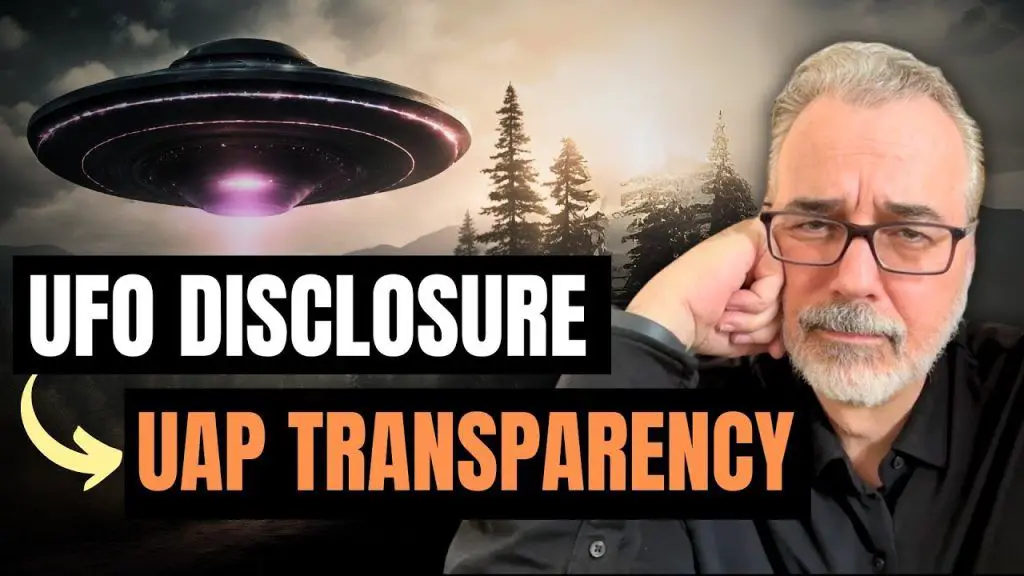
Richard Dolan, a prominent UFO historian, delves into the evolving terminology and its implications in his insightful analysis on “The Richard Dolan Show.” The shift from “UFO” to “UAP” and from “Disclosure” to “Transparency” is more than mere semantics; it reflects broader societal and institutional attitudes toward these phenomena and attempts at narrative control.
The Evolution of Terminology
In the early days of UFO sightings, the term “flying saucers” was commonly used. This term carried connotations of science fiction and public hysteria, which often overshadowed serious investigations. Over time, the term evolved to “unidentified flying objects” (UFOs), a phrase coined by the United States military to bring a veneer of scientific objectivity and bureaucratic stability to the study of these phenomena.
In recent years, however, there has been a notable shift toward the term “unidentified aerial phenomena” (UAP) and more recently, “unidentified anomalous phenomena.” This transition reflects an ongoing effort to rebrand and destigmatize the subject, making it more palatable for scientific study and public discussion. Dr. Richard Haynes, a NASA scientist and active UFO researcher, is credited with popularizing the term UAP in the 1990s, aiming to strip away the cultural baggage associated with UFOs and encourage serious investigation.
From Disclosure to Transparency
For decades, the UFO community has championed the concept of “disclosure,” which implies a revealing of hidden or secret information about UFOs by an established authority, often envisioned as a dramatic, definitive revelation by the President or another high-ranking official. This notion of disclosure suggests a moment of truth, where the existence and nature of UFOs would be laid bare for public scrutiny.
In contrast, the term “transparency” has recently come into vogue, particularly in political and military circles. Transparency implies an ongoing process of openness and accountability but lacks the promise of a complete or final revelation. This shift from “disclosure” to “transparency” can be seen as a form of virtue signaling, providing a semblance of accountability while still allowing those in power to control the narrative and the extent of information released.
The Role of Language in Shaping Perception
Dolan emphasizes the power of language in shaping public perception and controlling narratives. He draws parallels with George Carlin’s critique of “soft language,” which dilutes the truth and makes serious issues seem less immediate and real. Similarly, George Orwell’s exploration of political jargon and euphemisms in “Politics and the English Language” highlights how language can obscure harsh realities and manipulate public thought.
The rebranding of UFOs to UAPs and the shift from disclosure to transparency can be seen as modern examples of these linguistic strategies. By changing the terminology, authorities can influence how the public perceives and discusses these phenomena, often reducing the urgency and altering the nature of the conversation.
Implications for the Future
While the shift to UAP and the emphasis on transparency have opened the door to broader discussions and bipartisan support in Congress, they also come with potential pitfalls. The term UAP encompasses a wide range of phenomena, including any airborne objects that cannot be immediately identified. This broad definition can dilute the focus on truly unexplained phenomena and make it easier for authorities to dismiss or downplay significant sightings.
Moreover, the promise of transparency without the commitment to full disclosure may lead to continued obfuscation and control of the narrative. As Dolan notes, the institutional structures that have grown around the UFO secret over the past 80 years are deeply entrenched, involving significant financial interests and powerful players. Genuine disclosure, if it ever comes, is likely to be disruptive and challenging to the status quo.
In conclusion, Richard Dolan’s analysis on “The Richard Dolan Show” sheds light on the significant shifts in language and terminology surrounding UFOs and UAPs. Understanding these changes is crucial for anyone interested in the study of unidentified phenomena and the broader societal and institutional forces at play. The transition from UFO disclosure to UAP transparency reflects deeper efforts at narrative control and highlights the ongoing challenges in achieving true openness and understanding in this enigmatic field.


Leave a Reply